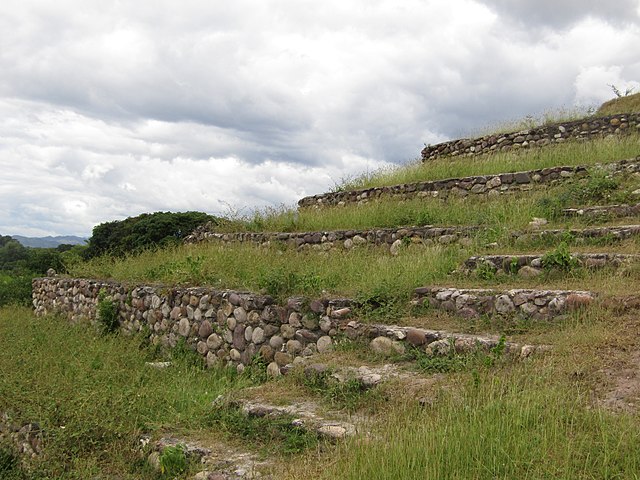El Tajín is a pre-Columbian archeological site in southern Mexico and is one of the largest and most important cities of the Classic era of Mesoamerica. A part of the Classic Veracruz culture, El Tajín flourished from 600 to 1200 AD and during this time numerous temples, palaces, ballcourts, and pyramids were built. From the time the city fell, in 1230, to 1785, no European seems to have known of its existence, until a government inspector chanced upon the Pyramid of the Niches.
El Tajín
Pyramid of the Niches before restoration (1913 photo). The present-day view of the pyramid can be seen here.
One of Carl Nebel's drawings of the Pyramid of the Niches
World Heritage Site plaque
Mesoamerican chronology divides the history of prehispanic Mesoamerica into several periods: the Paleo-Indian ; the Archaic, the Preclassic or Formative (2500 BCE – 250 CE), the Classic (250–900 CE), and the Postclassic (900–1521 CE); as well as the post European contact Colonial Period (1521–1821), and Postcolonial, or the period after independence from Spain (1821–present).
Olmec Stone Mask.
Structure 102 in Yarumela.
Recreation of Temple Rosalila at the Mayan Sculpture Museum, Honduras
Tikal ruins, Guatemala.








